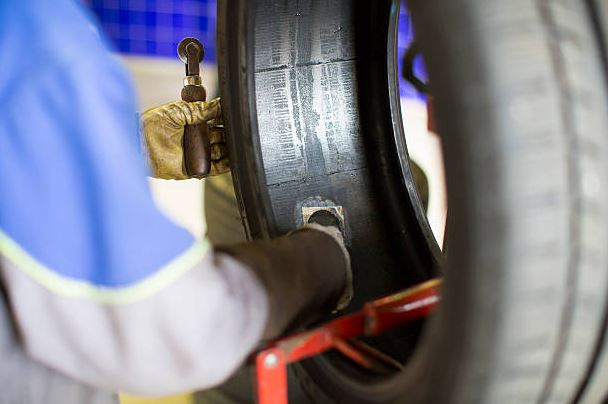Driving on a patched tire is never a good idea. It’s downright dangerous. But if you absolutely must do it, there is a limit to how fast you can drive.
First, it’s important to understand that a patch is not a permanent fix for a punctured tire. It’s a Band-Aid designed to get you from point A to point B until you can properly repair or replace the tire.
That being said, what is the highest speed you can go on a patched tire?
Table of Contents
So How Fast Can You Drive On A Patched Tire?
The short answer is: not very fast. Many tire experts recommend keeping your speed below 50 miles per hour (80 kilometers per hour) when driving on a patched tire. And even then, you should be prepared to slow down or pull over if you feel the patch failing.
Meanwhile, the speed at which you can safely drive on a patched tire depends on a few factors. For one, the size and location of the patch will play a role. For example, a patch on the tire’s sidewall is generally less reliable than one on the tread.
Another important factor is the type of patch used. Some patches are more robust and can withstand pressure at higher speeds. However, it’s generally best to lean on caution and avoid pushing the limits of your patched tire.
How Safe Is A Patched Tire?
The chances of a blowout are high when you drive with a patched tire, but it should be safe if you stick to the recommended speed limit.
The safest thing to do when you have a patched tire is to not drive further than necessary, or else you put the tire’s sidewall on the line.
It also depends on the mechanic you entrust to get the tire patched. You need a trusted mechanic to stop the leak and examine the tire for sidewall damage. The right mechanic should also advise you on how long you can drive on the plugged tire.
Do Patched Tires Blowout at High Speeds?
This depends on the quality of the path and the tire brand. While some tires will go up to 120 miles per hour on a patched tire, another could shred at 85. So, it’s best to stick to the recommended 50 miles per hour.
One thing you should keep in mind when repairing a punctured tire is that its structural integrity has been compromised. So when you patch it (instead of replacing it), the possibility of a blowout or similar wheel failure at high speeds is valid.
Of course, patched tires blow out even at low or moderate speeds, but the chances are higher when you go at high speeds.
If you have no choice but to drive at high speeds on a patched tire, the highest you should go is 90 mph.
How Long Does A Tire Patch Last?
As far as “repairing” goes, a properly installed tire patch can hold air pressure for as long as you use it. However, the emphasis is on the quality of the patch and the magnitude of damage done to the tire that required patching.
For example, tires on the market today have narrower tread belt packages, which means the repair must be done inside the tread belt package. Also, the diameter of the puncture or damage should be considered before repairing it with a patch-only fix.
For a tire patch to last indefinitely, as expected, the mechanic should use a complete tire repair system or an entire repair kit from the same manufacturer.
In my experience, a patch job done using a mishmash of products from different manufacturers does not hold air pressure for long—some even lead to blowouts. This is because compatibility plays a huge role when repairing tires that suffer a puncture or any related tire injury.
5 Things To Consider Before Patching Tires
1. As mentioned earlier, the tire’s brand, the patch’s quality, and the number of times you have patched a tire will ultimately determine how long you can drive on that patched tire.
2. You also need to consider the part of the tire where the puncture happened. If it is a spot that has been patched already in the past, it is not safe to overlap patches; You will need a replacement.
3. The size of the puncture or cut that has damaged the tire will also determine how possible it is to patch and how fast you can go. Any cut more than ¼ inch should not be patched.
4. It is generally recommended that you patch your tire according to the repair kit instructions or allow a mechanic to examine it instead of risking compatibility issues.
You may be able to drive as fast as 50 mph on patched tires, but when it is a sloppy repair job, you risk a blowout at even lower speeds.
5. Punctures or tire injuries sustained on the sidewall or shoulder of the tire should not be patched. As mentioned earlier, this kind of tire repair is not durable enough to help that area of the tire withstand pressure at high speeds.
In a nutshell
All the points we’ve run through in the above article point in one direction: driving on a patched tire is never a good idea.
If you have a punctured tire, your best bet is to get it repaired or replaced as soon as possible. And if you absolutely must drive on a patched tire, keep your speed low and be prepared for the possibility of a tire failure.
Remember that the brand of the tire and the severity of the tire injury will also determine whether or not you need to patch it in the first place.
Stay safe out there!

